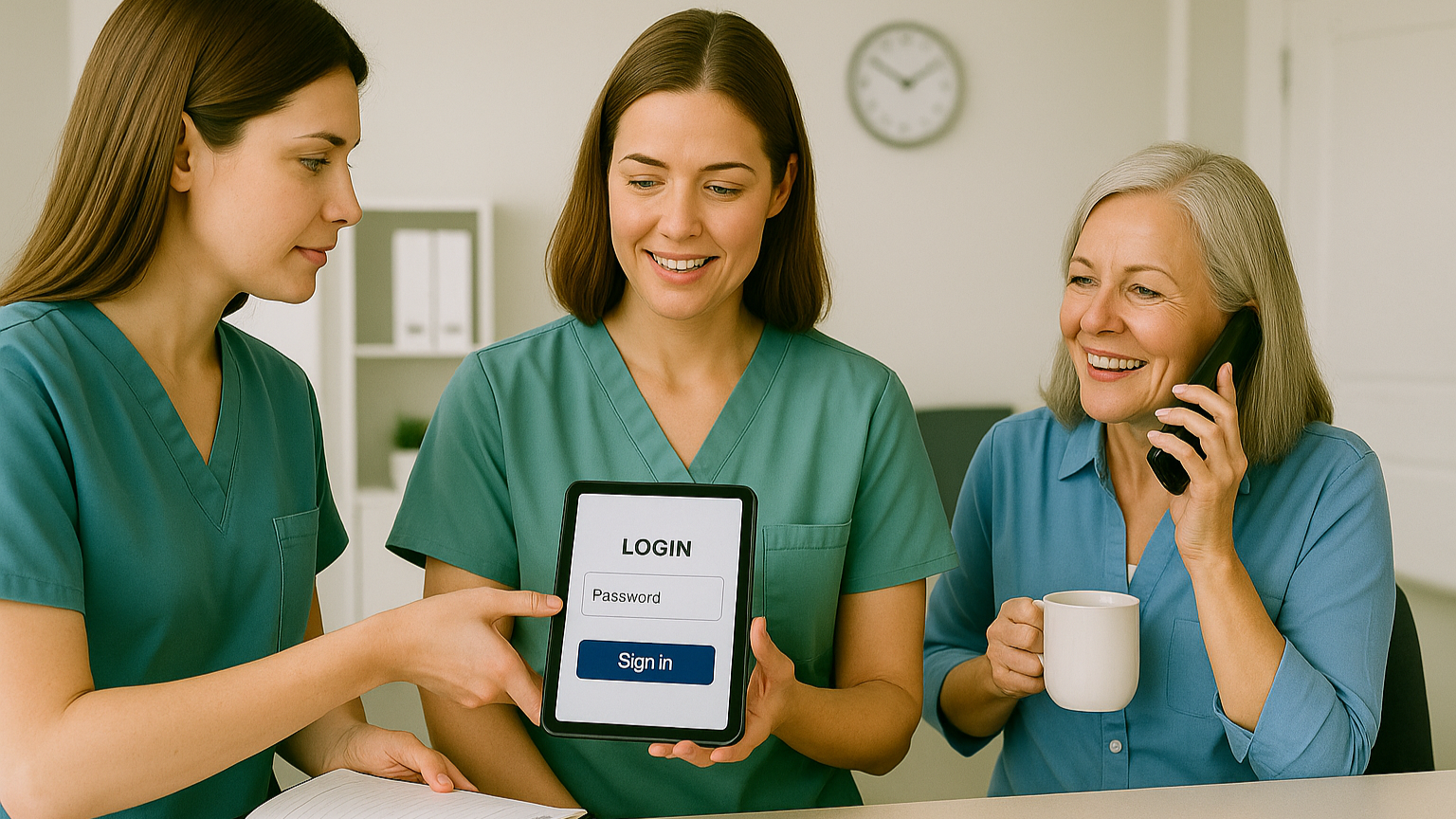How to Improve Clinic Efficiency Without Adding Staff
💡The key to improve clinic efficiency lies in strategies that reduce admin burden. Doing so improves patient flow without hiring and increases...
6 min read
Gregory Vic Dela Cruz : 8/8/25 10:00 AM

For small clinics, the front desk serves as the central hub of daily operations. In most cases, it's the first touchpoint of patient interaction, making it a source for bottlenecks. Manual appointment scheduling, paper-based intake forms, and overworked reception staff often lead to delays, missed calls, and frustrated patients.
This blog will walk you through the fundamentals of clinic front desk workflow automation. We’ll explore the challenges clinics face, the benefits of automation, and a practical checklist to guide you through key improvements like appointment reminders, digital intake, and insurance verification.
Ready to transform your front desk into a hub of streamlined efficiency? Let’s explore how automation can free up staff time, improve accuracy, and enhance your patients' experience. Also, if you're eager to make your front desk more efficient now, make sure to see our free checklist below.
Front desk operations are the heartbeat of any clinic—handling appointment scheduling, patient intake, insurance verification, follow-ups, and more. But in most small practices, these processes are heavily manual, inconsistent, and prone to human error. That’s where clinic front desk workflow automation becomes essential, not optional. By introducing smart automation tools, small clinics can dramatically reduce administrative burden while improving speed, accuracy, and patient satisfaction.
Unlike hospitals or large systems with specialized roles, small clinics operate with lean teams. A single receptionist often juggles incoming calls, walk-ins, paperwork, and check-outs—all while trying to keep wait times low. This multitasking bottleneck leads to:
Automating your front desk workflows eliminates redundant manual steps and creates a seamless, predictable process. From automating pre-visit form collection to auto-verifying insurance eligibility and sending reminders—every task removed from your receptionist's plate frees them to focus on delivering a better patient experience.
Here are critical workflows that can (and should) be automated in a small clinic:
Implementing clinic front desk workflow automation isn’t about replacing staff—it’s about elevating their role from task doers to experience enhancers. Instead of being tied to the phone or a pile of forms, your front desk team becomes a strategic part of the care journey—greeting patients, resolving concerns, and making the clinic feel welcoming. Automation gives your practice the operational backbone it needs to scale efficiently while delivering a better patient experience.
Running a clinic without workflow automation often creates a silent drain on resources and morale. Let's explore the most pressing pain points small clinics face at the front desk:
Staff are often responsible for juggling multiple roles—scheduling, intake, phone calls, and billing. Without automation, burnout becomes inevitable.
High call volumes mean that many patients are placed on hold or simply give up. Missed calls translate directly into lost appointments and revenue.
Manual entry of patient information increases the likelihood of mistakes in records, billing, and prescriptions—jeopardizing care quality.
Paper forms, clipboards, and manual uploads delay the patient intake process, clogging the schedule and increasing wait times.
Without an automated reminder system, patients are more likely to forget appointments, causing revenue loss and scheduling chaos.
Following up with patients manually—whether for recalls, lab results, or insurance issues—slows down the workflow and results in missed communications.
Manual processes don’t provide real-time insights into patient flow, appointment volume, or staff performance, making it harder to identify operational gaps.
These challenges highlight the urgency for digital solutions like an automated check-in system for clinics. When routine tasks are automated, front desk staff can focus on improving patient experience instead of just keeping up.
One of the biggest time-wasters at the front desk is patient check-in. Clipboards, paper forms, and manual data input not only slow things down—they increase the risk of errors. An automated check-in system for clinics eliminates this inefficiency by letting patients complete forms digitally before arrival or at a self-service kiosk upon entry.
Imagine a patient arriving at your clinic and checking in via a tablet, instantly updating their demographics, insurance, and reason for visit. Front desk staff are immediately notified, eliminating back-and-forth communication. Patients spend less time in the lobby, and your team spends more time providing value-based care.
Small clinics with limited staff benefit significantly from these systems, which standardize intake processes and reduce room for manual error. Automated check-in also helps collect pre-visit information like insurance cards or health history—allowing providers to prepare more efficiently.
To help you get started with automation, here’s a practical checklist covering three key areas: patient intake, appointment reminders, and insurance verification. Each step is designed to streamline workflow, reduce human error, and improve patient satisfaction.
This checklist helps you prioritize automation steps that reduce friction for both staff and patients. Start with intake, move to reminders, and finish with verification—each layer adds measurable efficiency to your clinic’s operations.
Medical receptionist automation tools are essential for small clinics striving to improve efficiency without expanding headcount. Tools like Curogram empower front desk teams by automating routine communication, reminders, and documentation—transforming them from overwhelmed to optimized.
Here’s how Curogram’s features support front desk automation:
These tools minimize the need for repetitive manual work like confirmation calls, reminder emails, or answering frequently asked questions. With automation in place, your receptionists can focus on complex patient issues that require a human touch.
Ultimately, the right medical receptionist automation tools don’t replace your front desk staff—they enhance their capabilities. Clinics that leverage tools like Curogram often see improved morale, fewer errors, and more satisfied patients.
The heart of front desk automation lies in effective clinic appointment management software. Without it, even the best staff will struggle to keep up with scheduling demands. Whether it's handling cancellations, rescheduling requests, or accommodating last-minute appointments, a modern scheduling system is key.
Curogram’s appointment management features meet these needs. Clinics can reduce missed appointments by allowing patients to confirm or cancel via text. Dynamic scheduling also lets providers customize reminders and pre-visit instructions by visit type, patient language, and more.
With fewer phone calls and better time coordination, your staff can spend less time managing calendars and more time on patient care. And for patients, the ease of texting to schedule—or receiving reminders automatically—significantly boosts their satisfaction.
Running a small clinic shouldn’t mean settling for outdated processes. Automating your front desk workflow helps reduce administrative overload, improve accuracy, and offer a smoother experience for both staff and patients.
From digital check-ins and reminders to seamless appointment scheduling and HIPAA-compliant messaging, workflow automation is no longer a luxury—it’s a necessity. Clinics that adopt these tools free up staff time, reduce patient wait times, and improve operational clarity.
Excited to see how Curogram can make your operations more efficient? Book a free demo today and discover how automation can revolutionize your clinic’s front desk workflow.
.png)
💡The key to improve clinic efficiency lies in strategies that reduce admin burden. Doing so improves patient flow without hiring and increases...

Medical practitioners often admit that patient care is a team sport. Like any high‑performing team, private practices win when the playbook is clear....
.png)
💡Clinic workflow management is the system that keeps a medical practice running smoothly. It covers every step—from patient intake to scheduling,...